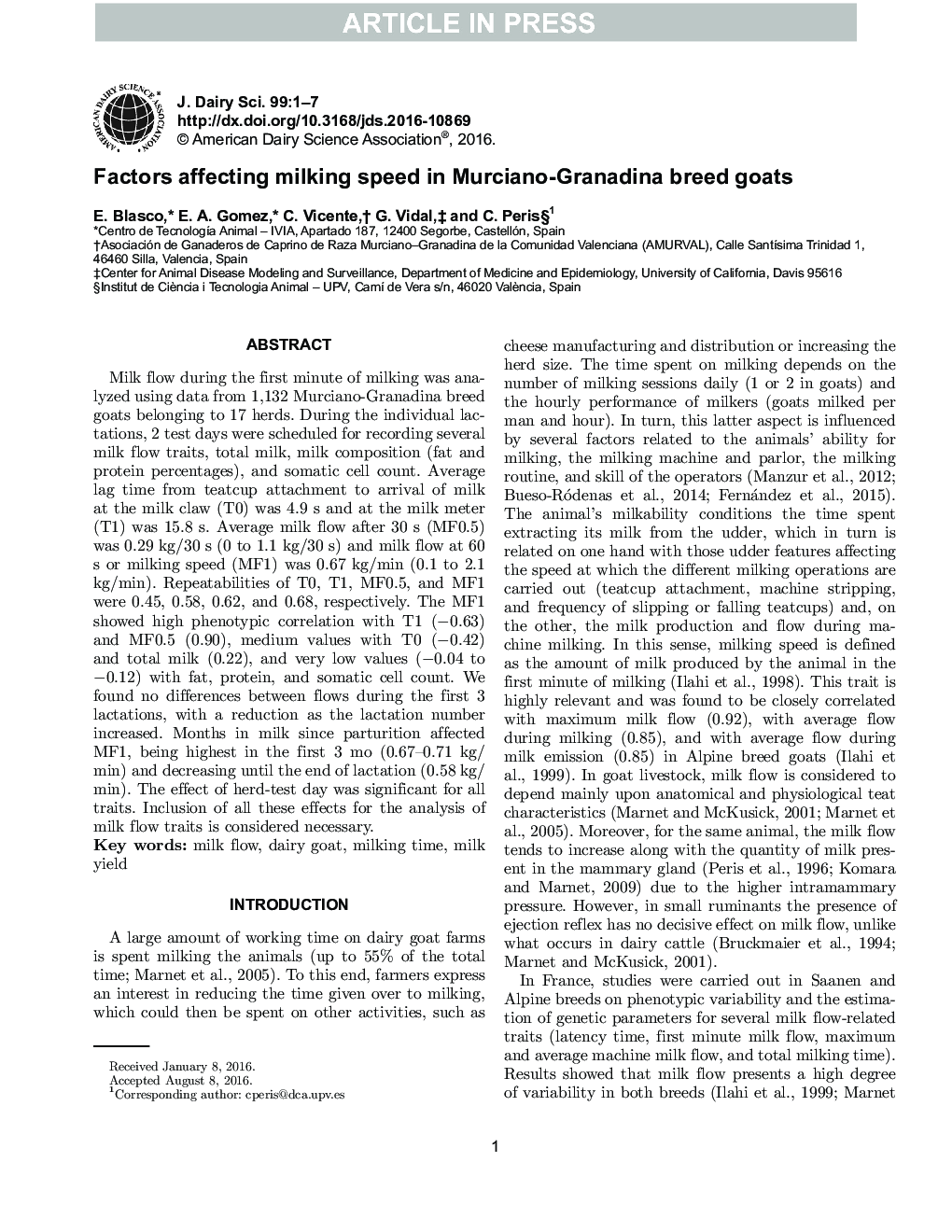| Article ID | Journal | Published Year | Pages | File Type |
|---|---|---|---|---|
| 5542780 | Journal of Dairy Science | 2016 | 7 Pages |
Abstract
Milk flow during the first minute of milking was analyzed using data from 1,132 Murciano-Granadina breed goats belonging to 17 herds. During the individual lactations, 2 test days were scheduled for recording several milk flow traits, total milk, milk composition (fat and protein percentages), and somatic cell count. Average lag time from teatcup attachment to arrival of milk at the milk claw (T0) was 4.9 s and at the milk meter (T1) was 15.8 s. Average milk flow after 30 s (MF0.5) was 0.29Â kg/30 s (0 to 1.1Â kg/30 s) and milk flow at 60 s or milking speed (MF1) was 0.67Â kg/min (0.1 to 2.1Â kg/min). Repeatabilities of T0, T1, MF0.5, and MF1 were 0.45, 0.58, 0.62, and 0.68, respectively. The MF1 showed high phenotypic correlation withT1(â0.63) and MF0.5 (0.90), medium values withT0(â0.42) and total milk (0.22), and very low values (â0.04 to â0.12) with fat, protein, and somatic cell count. We found no differences between flows during the first 3 lactations, with a reduction as the lactation number increased. Months in milk since parturition affected MF1, being highest in the first 3Â mo (0.67-0.71Â kg/min) and decreasing until the end of lactation (0.58Â kg/min). The effect of herd-test day was significant for all traits. Inclusion of all these effects for the analysis of milk flow traits is considered necessary.
Related Topics
Life Sciences
Agricultural and Biological Sciences
Animal Science and Zoology
Authors
E. Blasco, E.A. Gomez, C. Vicente, G. Vidal, C. Peris,
